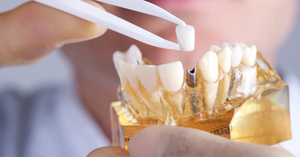Gum disease, also known as periodontal disease, isn’t just an adult problem—it can also affect children. Early detection and proper care are essential to prevent serious dental issues. This article explores how to identify healthy gums in children, differentiate between healthy and diseased gums, and offers tips for prevention and management.
Characteristics of Healthy Gums in Children
Healthy gums in children are a crucial indicator of overall oral health. A child’s gums should exhibit the following characteristics:
– Color: Healthy gums are typically a pale pink color. The shade can vary slightly depending on the child’s complexion, but they should not be red or overly pale.
– Texture: The texture should be firm and resilient, not swollen or spongy. When touched, healthy gums should spring back quickly.
– Contour: The gums should snugly fit around the teeth, with a scalloped edge that gently contours around each tooth. There should be no gaps or pockets between the gum and the tooth.
– Absence of Bleeding: Healthy gums do not bleed during brushing or flossing.
Differentiating Between Healthy and Diseased Gums
Recognizing the signs of gum disease early can prevent more severe dental issues. Here are key differences between healthy and diseased gums:
1. Color Changes: Diseased gums often appear red, swollen, or purplish, indicating inflammation. In contrast, healthy gums maintain a consistent pink hue.
2. Texture and Firmness: While healthy gums are firm, diseased gums may feel soft or spongy. In more advanced cases, they can recede, exposing more of the teeth.
3. Bleeding: One of the most common signs of gum disease is bleeding during brushing or flossing. This can indicate gingivitis, an early stage of gum disease.
4. Bad Breath: Persistent bad breath or a bad taste in the mouth, even after brushing, can be a sign of gum disease due to bacterial buildup.
5. Discomfort or Sensitivity: Children with gum disease may experience discomfort, sensitivity, or pain in their gums, especially when eating or brushing.
Prevention of Gum Disease in Children
Preventing gum disease starts with establishing good oral hygiene habits early in life. Here are key preventive measures:
1. Regular Brushing and Flossing: Children should brush their teeth at least twice a day with fluoride toothpaste and floss daily to remove plaque and food particles from between the teeth.
2. Healthy Diet: A balanced diet low in sugary snacks and drinks can help prevent plaque buildup and promote healthy gums.
3. Regular Dental Checkups: Regular visits to the dentist for cleanings and checkups are essential. Dentists can identify early signs of gum disease and provide professional cleanings to remove plaque and tartar.
4. Education and Supervision: Parents should educate children about the importance of oral hygiene and supervise their brushing and flossing routines to ensure they are doing it correctly.
Management and Treatment of Gum Disease
If a child develops gum disease, early intervention is crucial. The treatment plan depends on the severity of the condition:
1. Gingivitis: This early stage of gum disease can often be reversed with improved oral hygiene practices and professional cleanings. Dentists may recommend using an antibacterial mouthwash.
2. Periodontitis: If gingivitis progresses to periodontitis, more intensive treatment may be required. This can include deep cleaning procedures, such as scaling and root planing, to remove plaque and tartar from below the gum line. In severe cases, surgical intervention may be necessary.
3. Home Care Instructions: Following professional treatment, maintaining excellent oral hygiene at home is vital to prevent recurrence. This includes diligent brushing, flossing, and potentially using specialized oral care products recommended by the dentist.
Avoiding Gum Disease: Tips for Parents
– Model Good Habits: Children learn by example, so parents should model good oral hygiene habits.
– Encourage Healthy Snacks: Replace sugary snacks with healthier options like fruits and vegetables.
– Use Fluoride Products: Ensure children use fluoride toothpaste and consider fluoride treatments if recommended by the dentist.
– Monitor for Symptoms: Keep an eye out for any signs of gum disease, such as bleeding gums, and seek dental advice promptly if symptoms arise.
Conclusion
Gum disease in children, though often overlooked, is a critical aspect of their oral health. By understanding the characteristics of healthy gums, recognizing the signs of gum disease, and implementing preventive measures, parents can ensure their children maintain healthy smiles. Regular dental checkups and good oral hygiene practices are the cornerstones of preventing and managing gum disease, setting the foundation for a lifetime of good dental health.








Be the first one to comment on this story.